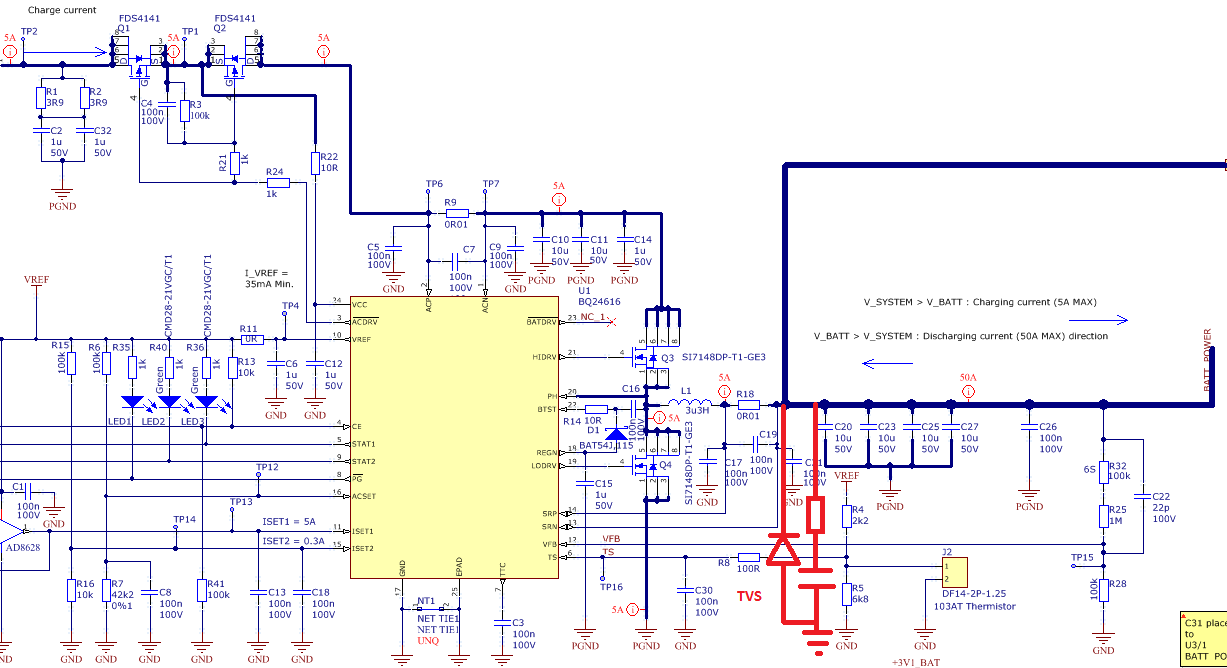I am having an issue with the bq24616RGET device. The design has been taken from the bq2461x/bq2463x EVM (HPA422) evaluation board for a 6S battery.
When no ACPWR is supplied and a LiPo (6S 25.2V) battery is connected, the device fails, taking a large inrush current which causes the sense resistor (R18 0.01R 500mW) to go open circuit. The drain to source resistance on Q4 is also affected, measuring some 33R.
I have a 6S LiPo battery pack connected through a switch to the UUT, with leads 150mm long. Could this be adding inductance?
My question is can this design be operated without supplying ACPWR or must the ACPWR initialise the device before connecting the battery?


